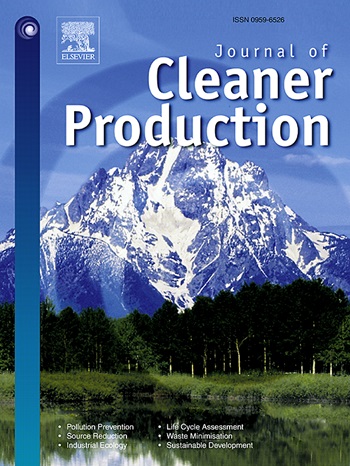基于ReaxFF分子动力学的褐煤与聚丙烯共热解的协同效应及重分布特征
IF 10
1区 环境科学与生态学
Q1 ENGINEERING, ENVIRONMENTAL
引用次数: 0
摘要
本文采用反应力场分子动力学(ReaxFF-MD)方法结合原子标记法对准东煤与聚丙烯(PP)共热解行为进行研究,探讨协同演化机理。不同温度下固定床实验(500-1000℃)和ReaxFF MD (2000-3000 K)模拟得到一致的产物分布和协同效应特征,表明高温促进了焦油产物的生成。对共热解焦油组分的来源进行了详细的区分,结果表明煤组分向焦油组分迁移,而塑料组分仅限于向重质焦油迁移。自由基的结合产生了被归类为重焦油的稳定化合物,导致焦油产量增加。此外,共热解在早期促进了两种原料在低温下的大分子分解,而标记方法表明,随着时间的延长,H和烃自由基先后被焦炭捕获,产生稳定的大分子中间体。此外,抑制煤焦油在高温下的二次反应导致焦油的正协同作用,克服了PP焦油进一步分解成气体的行为。组分迁移视角的发现进一步丰富了煤与塑料共热解相互作用的理论信息。本文章由计算机程序翻译,如有差异,请以英文原文为准。
Synergistic effect and redistribution characteristics during co-pyrolysis of lignite and polypropylene based on ReaxFF molecular dynamic
In this paper, the co-pyrolysis behavior of Zhundong coal and polypropylene (PP) was studied by reactive force field molecular dynamic (ReaxFF-MD) method combined with atomic labeling method to investigate the synergy evolution mechanism. Consistent product distribution and synergistic effect characteristics obtained from fixed-bed experiments (500–1000 °C) and ReaxFF MD (2000–3000 K) simulations at different temperatures suggesting that high temperatures promote the generation of tar products. The sources of the co-pyrolysis tar components were distinguished in detail, the results reveal that the components from coal migrated towards the tar fraction, whereas the components from plastics were confined to migration to heavy tar. The combination of free radicals generated stabilizing compounds categorized as heavy tar leading to an increase in tar yield. Moreover, co-pyrolysis promoted the macromolecular decomposition of both feedstocks at low temperature in the early stage, whereas labeling methods demonstrated that the H and hydrocarbon radicals were successively captured by the char with the extension of time to produce stabilized macromolecular intermediates. Furthermore, the inhibition of secondary reactions of coal tar at high temperatures result in the positive synergy of tar which overcomes the further decomposition behavior of PP tar into gas. The findings of the component migration perspective further enriched the theoretical information on the co-pyrolytic interaction between coal and plastics.
求助全文
通过发布文献求助,成功后即可免费获取论文全文。
去求助
来源期刊

Journal of Cleaner Production
环境科学-工程:环境
CiteScore
20.40
自引率
9.00%
发文量
4720
审稿时长
111 days
期刊介绍:
The Journal of Cleaner Production is an international, transdisciplinary journal that addresses and discusses theoretical and practical Cleaner Production, Environmental, and Sustainability issues. It aims to help societies become more sustainable by focusing on the concept of 'Cleaner Production', which aims at preventing waste production and increasing efficiencies in energy, water, resources, and human capital use. The journal serves as a platform for corporations, governments, education institutions, regions, and societies to engage in discussions and research related to Cleaner Production, environmental, and sustainability practices.
 求助内容:
求助内容: 应助结果提醒方式:
应助结果提醒方式:


